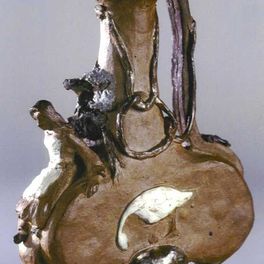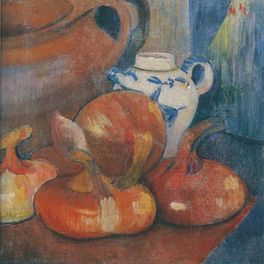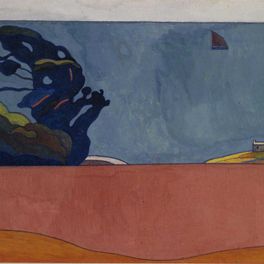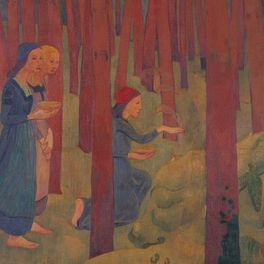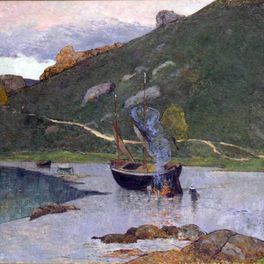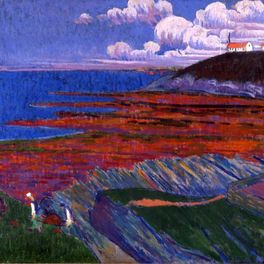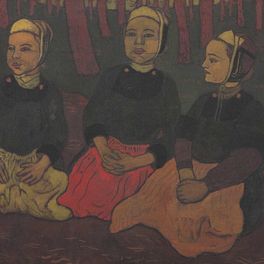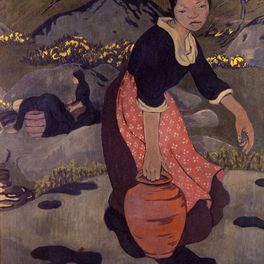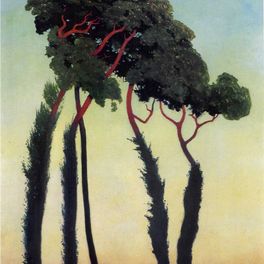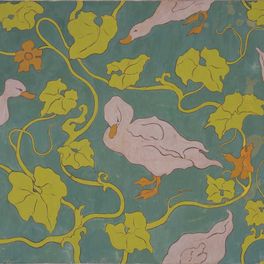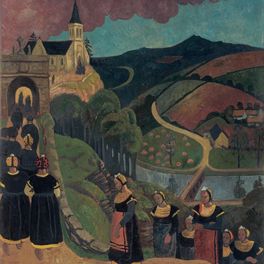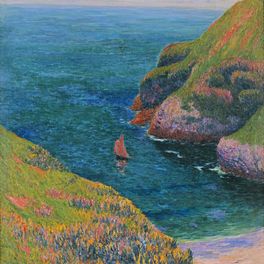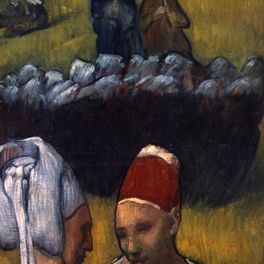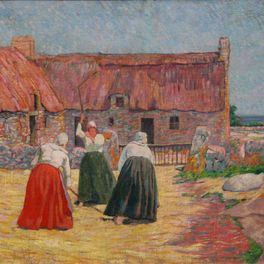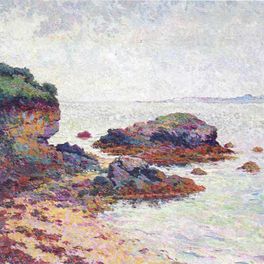The Pont-Aven School
From the 1860s to the 1870s, many painters, including some from Britain, were attracted to the small town of Pont-Aven situated between the sea and the countryside. They found many sources of inspiration there, and also appreciated the hospitality of the inhabitants, as well as the boarding houses and hotels with their « art student » ambience. Paul Gauguin, at an unhappy time in his life, found refuge there in 1886 and stayed in both Pont-Aven then in Le Pouldu, a hamlet by the sea, on five separate occasions up to 1894. From the meeting between Gauguin and Émile Bernard came Synthetism, a new aesthetic theory that was a forerunner of modern art.
However, the museum officials, friends of academic painters met in Concarneau, ignored the works of these artists and it was not until 1936 that a first Sérusier was included in the collection, and 1949 before a genuine interest was shown in this movement. Gauguin’s works were already inaccessible to museums such as the one in Quimper. Today, the collection has three works by Gauguin, and also an interesting set of paintings, drawings and prints by various artists who were more or less influenced directly or indirectly by him. These works enable us to understand the considerable upheaval sparked by these developments in Brittany.
The museum has a particularly beautiful series of works from different periods by Paul Sérusier who, after visiting Pont-Aven and Le Pouldu, settled in Argoat, Huelgoat and then in Châteauneuf-du-Faou. Since 1985, the museum has strived to build a collection of works by Charles Filiger. It has grown considerably in recent years thanks to the generosity of Aube Elléouët, daughter of André Breton, who, during the 1950s, was the first person to show interest in this highly original artist who had been forgotten. These works, mainly gouaches on paper, are exhibited in rotation because of their fragility.
From lessons received and then passed on by Paul Sérusier came the Nabis (« prophets » in Hebrew), including artists such as Maurice Denis, Georges Lacombe, Félix Vallotton and Paul Ranson, whose few works exhibited show a Japanese influence and a decorative bias.

